Vordere Karlstraße 64
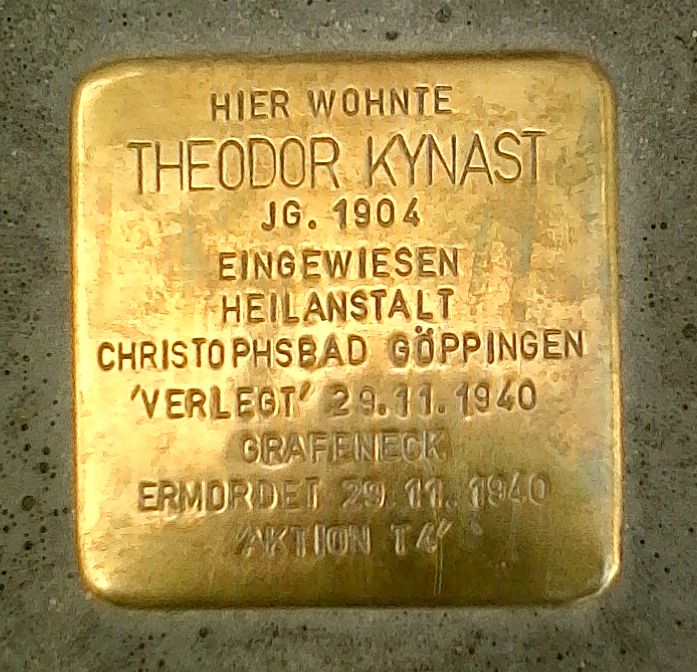
Very little is known about his life story. He was born on June 28, 1904 in Charkow in Ukraine; two of his three siblings died in childhood; the last one, his brother, died at the age of 20 in the former sanatorium in Winnenden. Theodor Kynast’s mother came from Finland, his father from Geislingen / Steige. In June 1939 the family moved from Rechberghausen to Göppingen to Vordere Karlstraße 64.
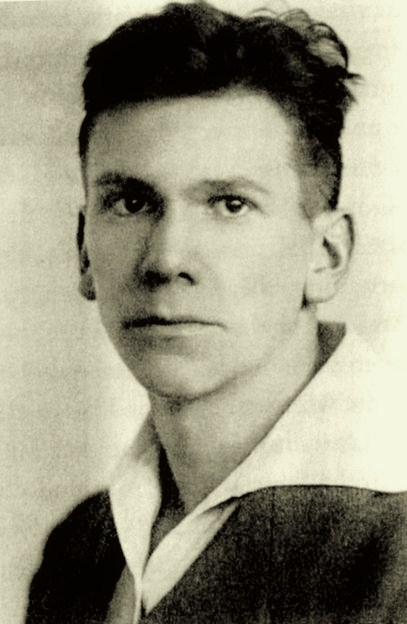
Mr. Kynast suffered from Schizophrenia, and it can be assumed with certainty that he had spent a lengthy period of time at Christophsbad, a specialized clinic in Göppingen. He was a ‘Staatspflegling’, i.e. he was one of the patients whose expenses were paid with public funds. On October 14, 1940 he was taken on order from the Württemberg Interior Ministry with 74 other patients from Göppingen to the sanatorium in Winnenden. Usually during the transport to Grafeneck a stop was made at another state institution in order to blur the tracks of the victims and the perpetrators. The victims usually were transported in busses with the windows covered.
On November 29 sixteen of the patients from Göppingen – among them Theodor Kynast – were transported together with patients from other institutions to the Grafeneck killing center, located near Münsingen on the Swabian Alb. On the same day Theodor Kynast was gassed.
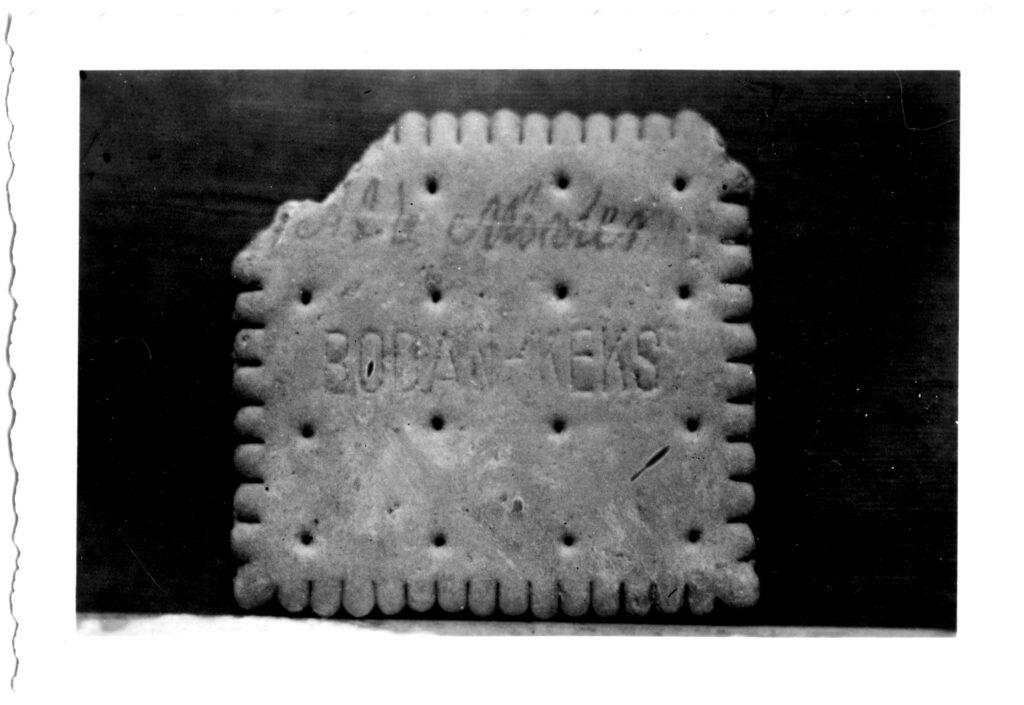
‘Department Murderer‘ is the note Theodor Kynast scratched into a biscuit which his parents received along with the rest of his belongings after he was murdered at the Grafeneck killing center near Münsingen. This communication was a last hopeless cry for help, a desperate reference to the crime committed against him, but also proof of the loss of any human dignity.
Grafeneck, a former ducal hunting lodge near the well-known state stud farm of Marbach, would have been an idyllic setting had it not been converted in 1940 into a killing center equipped with a gas chamber to hold 75 persons. It was the first one of its kind. The systematic mass murder of mentally ill and mentally handicapped people preceded the mass murder of the Jews; the gas chambers of Auschwitz were modeled on Grafeneck. The Grafeneck gas chamber was in operation in 1940/41 until it had reached its murderous goal.T he people living in the surrounding area must have known that the persons in the grey buses with covered windows were taken to be murdered. The cloud of smoke from the crematoriums no doubt could be seen from miles around.
Theodor Kynast was one of the more than 70,000 sick and mentally disabled men, women and children who in 1940 / 41 became victims of the Nazis’ so-called T4-Action at Grafeneck and five other killing centers. T4 was an enormous and systematically organized murdering program with the goal of destruction of ‘unworthy lives’. The program of ‘T4’ was planned in Berlin, Tiergartenstraße 4; there the expression ‘T4’ came from. Racial fanaticism and financial gain lead to the extermination policies of the Nazi regime. The ‘Volkskörper’ [the majority of the population] was to be cleansed of ‘useless eaters’ and ‘ballast lives’ so that facilities and staff of psychiatric institutions were available for the armed forces.
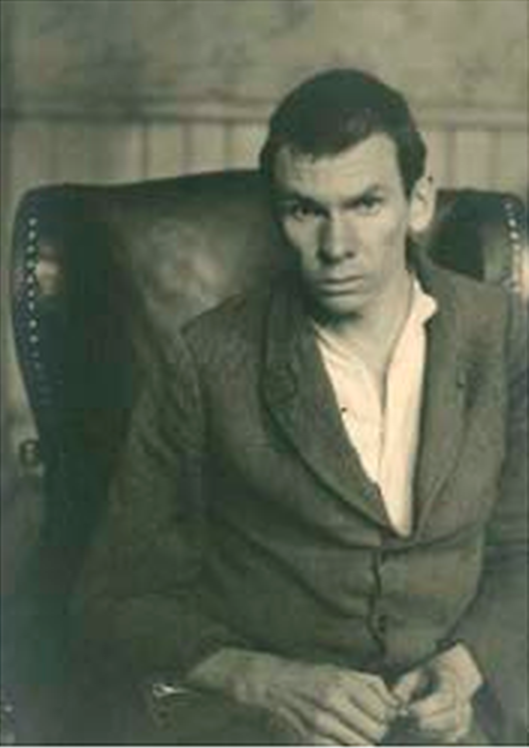
Kynast’s parents received the photo of the biscuit as well as the so-called letter of condolence with the notification of their son’s death from the murderers at Grafeneck. It was preserved for many years at today’s Grafeneck Memorial Center and is at time being kept at the House of History in Stuttgart.
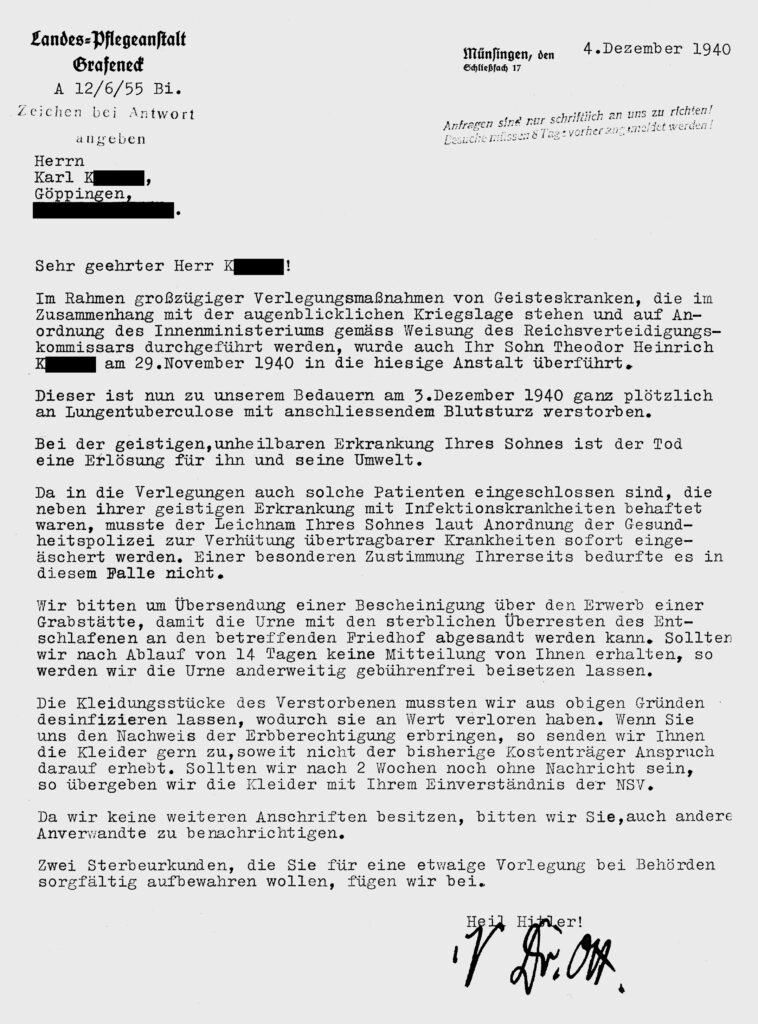
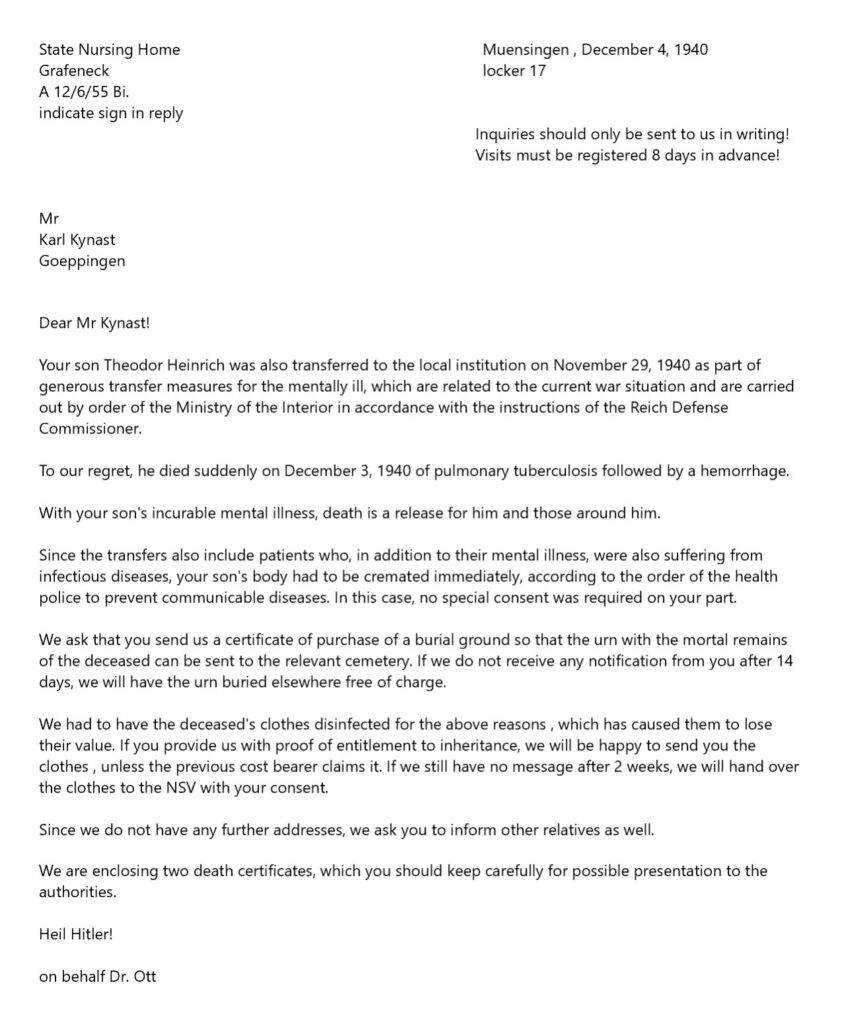
In the ‘comfort letter’ the cause and date of death had been falsified and reads as follows: ‘He did not have to suffer… According to medical knowledge and experience there was no hope for an improvement of his condition, therefore his death came as a merciful salvation.‘ The biscuit proves that the opposite was true.
Since April 2007 a Stumbling Stone reminds in front of the house at Vordere Karlstraße 64 of Theodor Kynast.
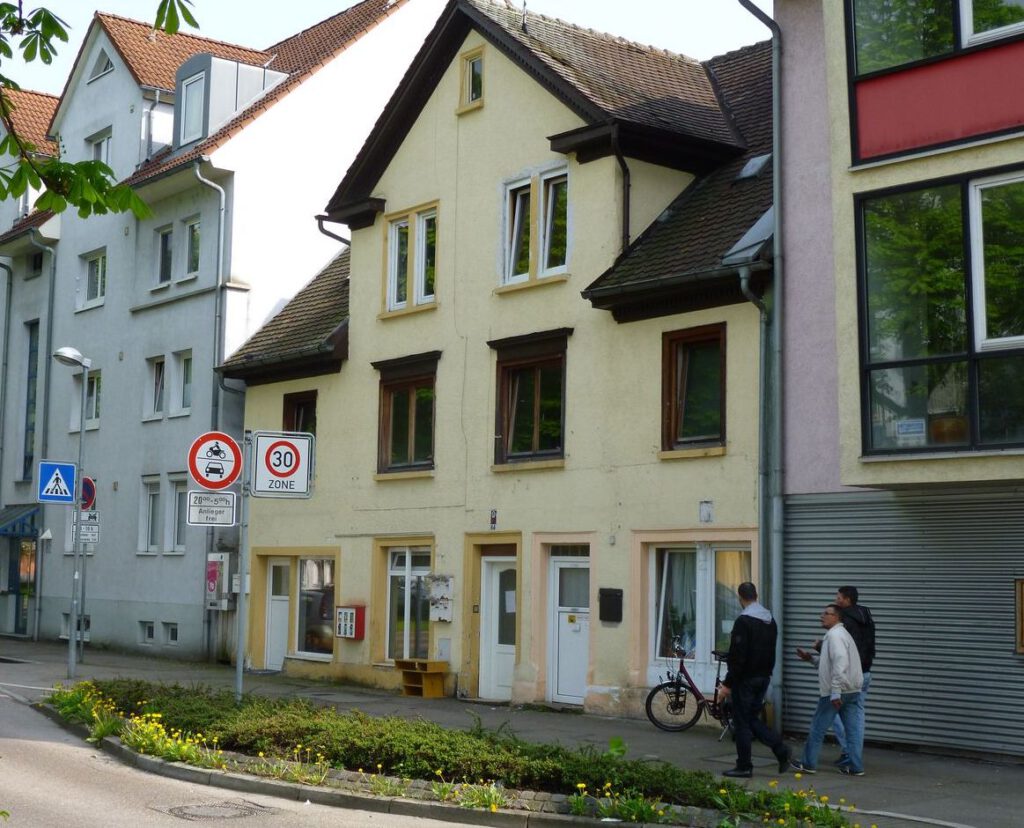
This text is based on the research done by Christa Limmer.
More information about ‘T4’ can be taken out of the brochure ‘Aktion T4 und die Heilanstalt Christophsbad‘ written by Thomas Stöckle as well in the book by Thomas Stöckle and Daniel Hildwein: ’Das Christophsbad Göppingen. Eugenik und NS – ‘Euthanasie’ 1933-1945’.
(07/23/2023 kmr/ir)


Theodor war ein hübscher junger Mann und hat einen sehr intelligenten Gesichtsausdruck!…….
keine Spur von ” Schizophrenie” in seinem Blick.